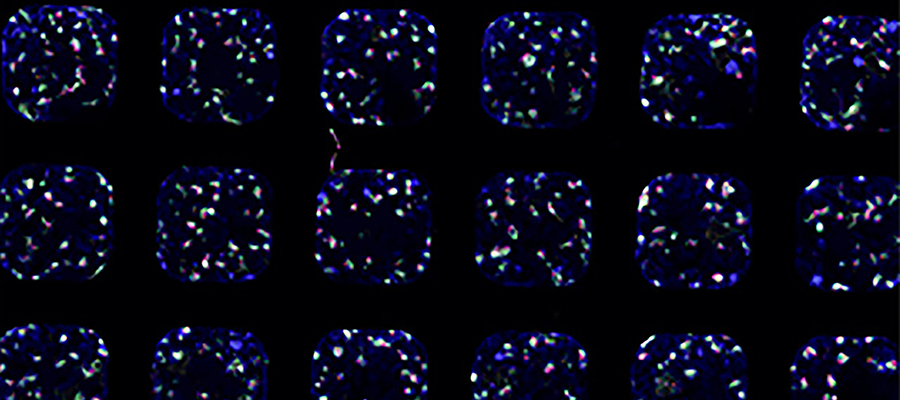NIH-Supported Researchers Use Robots, Stem Cells to Produce Organ Models

A plate with testing chambers containing kidney organoids that were generated by robots from human stem cells. The different colors mark distinct segments of the kidney. (Freedman Lab/University of Washington Photo)
To create an authentic environment in which to test drugs, researchers have increasingly used human stem cells — which can be manipulated to develop into diverse cell types — to build tiny 3-D tissue models called organoids, miniature versions of an organ that are grown in a laboratory and can mimic key features of a human organ’s structure and function. While they can have a wide range of potential uses in medical research, organoids can be challenging to grow reliably in large quantities. With support from the NCATS Tissue Chip for Drug Screening program and the National Institute of Diabetes and Digestive and Kidney Diseases, researchers at the University of Washington are seeking to address this challenge.
In a study published in Cell Stem Cell, these investigators created an automated procedure for producing kidney organoids in bulk from stem cells for medical research. The investigators programmed robots to place stem cells into plates containing up to 384 miniature testing chambers and prodded the cells to develop into organoids over the course of 21 days. The researchers then analyzed the organoids to ensure that the organoids exhibited characteristics that represented a developing kidney in healthy or disease states.
“This effort provided a reproducible organoid system that represents kidney function and is useful in testing drugs on a large scale and more efficiently,” said Danilo Tagle, Ph.D., NCATS acting deputy director and associate director for special initiatives. “One of the next steps is to bring these organoids into wider use, especially at NCATS for screening drugs and compounds against kidney diseases.”
Posted August 2018


